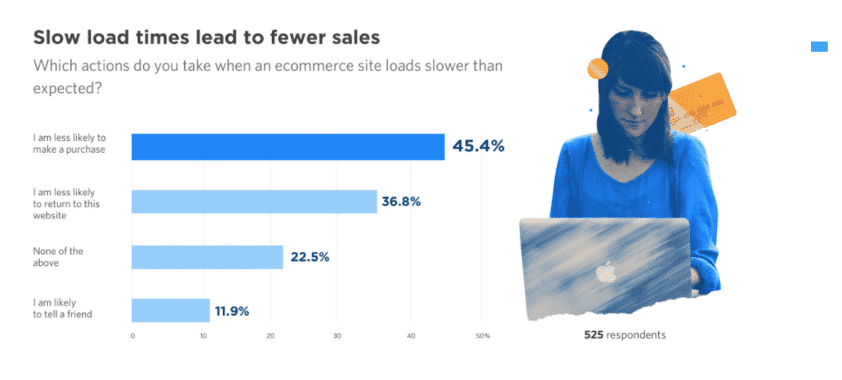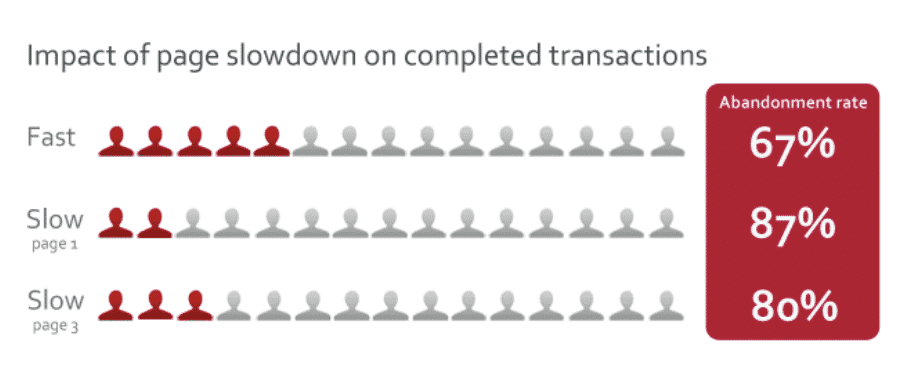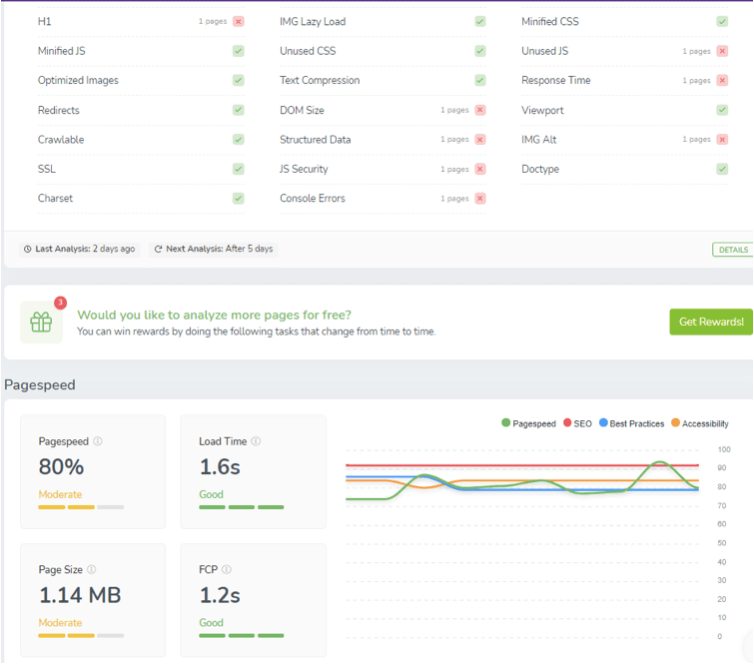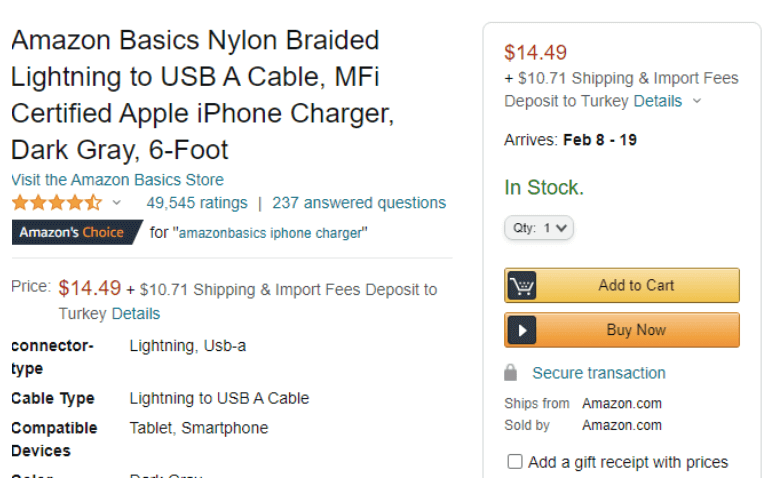Page Speed and Buying Behavior: What Do Your Customers Experience?
Page speed is a concept used for the time between loading your website enough (or completely) to present content in front of the user and the first browser request being sent to the app server. So, is your website or your project strong enough in terms of page speed score? How do the page speed rates of e-commerce sites affect the purchasing behavior of the visitors?
As you know, digital marketing is not just about the power of the slogans you put there on virtual billboards. A strong SEO strategy also requires what only a powerful digital marketing agency can do: That is, for a strong SEO strategy, you need to take the control of the speed of the pages.

Start your 7-day free trial! No credit card required.
How Does Load Speed Affects Customer Behavior?
There is a lot you can do to shape customer behavior as an e-commerce platform. The first of these is, of course, increasing conversion rates by ensuring that the time users spend on your website offer higher UX.
Unbounce revealed an interesting fact about conversion rates on e-commerce sites with its research published in 2019. The details of the work say the following:
- According to the data announced by Google, the possibility of users bounce increases significantly, especially after 3 seconds of delay. According to the continuation of the research, approximately 70 percent of e-commerce site visitors say that their purchasing behavior is affected by page speed performance. So what exactly did these participants do when they are ‘’negatively affected’’?
- 45.5 percent of users say “I am less likely to make a purchase on e-commerce sites that show a lower page speed than expected’’. But the real issue does not end with this.
- A 36.8 percent of the users state that they will not visit this site again. In short, this low page speed causes a negative impact on UX and results in damage to organic traffic. Increasing bounce rate damaging your SEO score can result in some kind of drop in your website’s overall score at the end of the job.

A Brief Introduction to the World of Psychology: Consumer Psychology
So, what exactly is the next behavior of users who decide not to buy a product from you due to your poor performance in page speed or who say they will not visit your site again? Let’s explore this together.
According to researches, users tend to refresh the website after about 3 seconds of waiting, because they don’t want to wait any longer. As a result of the refreshing process, sites that do not offer anything, even first contentful paid, are often abandoned.
- According to the most recent studies, after a 3-second waiting period, 22 percent of users prefer to close the tab directly.
- 14 percent of users visit another website that they estimate has a higher page speed than that site.
Are you aware of how big these rates are?
What does brand prestige and UX says about page speed?
User psychology studies say that a user’s connection with the brand also depends on the prestige the brand creates. Well, does page speed give information about the prestige of a brand?
Let’s say it right: Page speed creates a user’s impression of the brand’s professionalism and strong power that adapts to the digital world. If this impression is not strong enough, it may create the perception that the site is not competent enough in other digital services. Indeed, the fact that users prefer not to shop from sites with low page speed performance is not only due to the instant difficulty of shopping, but also a perceptual change.
Current Researches About Page Speed and Buying Behavior
Getting a user to buy the product after adding it to the cart requires very strong marketing efforts.
According to a Radware case study, approximately seventy percent of users who add products to their cart on e-commerce sites leave the site before completing the purchase by making a payment. Of course, there could be many reasons for this. High prices, high shipping costs are some of these reasons. But a recent study reveals that the majority of users in the US and UK are affected by slow loading times in delaying purchasing behavior by dropping items in the cart.
- According to an online shopping survey in the UK, 67 percent of users stop shopping because of the low page speed score on the website.
- This rate is 51 percent for users in the USA.
So, while managing strong marketing processes, it is vital for brands to maintain performance metrics such as page speed, with the strongest results.

In the above research, you see a bounce rate statistic that includes those who have a fast experience, those who have a slow experience on the first page, and those who have a slow experience on the third page. Here the delay is designated as two seconds. Even that two-second delay was enough for the second group to show a 67 percent bounce, which is a really high number.
Screpy allows you to track all of your performance metrics on a regular basis and creates tasks that will help you solve them by identifying all the problems that cause score drops in these metrics. In this way, more comprehensive and powerful results are obtained.

What To Do To Rocket Your E-Commerce Site?
If you are the owner of an e-commerce site or if you are doing SEO consultancy on such a site, there are many improvements you can choose to make after you follow up regularly through Screpy. Review the recommendations submitted as tasks on the panel. But you can take a look at a few possible problems that we will present for you here too!
- Do users have to visit multiple pages to go to the purchase while on your e-commerce site? The discovery of the “Buy now” button on e-commerce sites came after it is realized that more pages mean more time to ‘’waiting for loading’’. Every step that users get between their purchases and the product means more moments in which they become even closer to abandoning their purchase. To prevent this, giant e-commerce platforms such as Amazon are now trying to reduce the steps between the page where the products are reviewed and the page where they are purchased by adding “Buy Now” buttons.

- Minifying CSS, JavaScript, and HTML can be of great benefit. Are you sure your code source is simple and useful enough? Complicated code resources with a large number of dysfunctional areas can cause your website to load slowly. You do not want to miss this metric, which is important enough to affect your daily revenue, due to incorrect and broken coding. To fix this, make sure that spaces, commas, and other unnecessary characters are completely deleted from your source code. Also, ensure that unused and unnecessary formats and files are removed from your page.
- Have you ever thought that server response time should be improved? When the user clicks any button on your website, the browser app sends a request to the server. The server that responds to this request in the fastest way guarantees a faster loading process. This provides a web experience in which buying behavior is enhanced. So, did you improve server response time? Make sure that this time is under 200 ms to reach an optimal number.
Test Your Website Performance!
You can quickly analyze your site in a minute